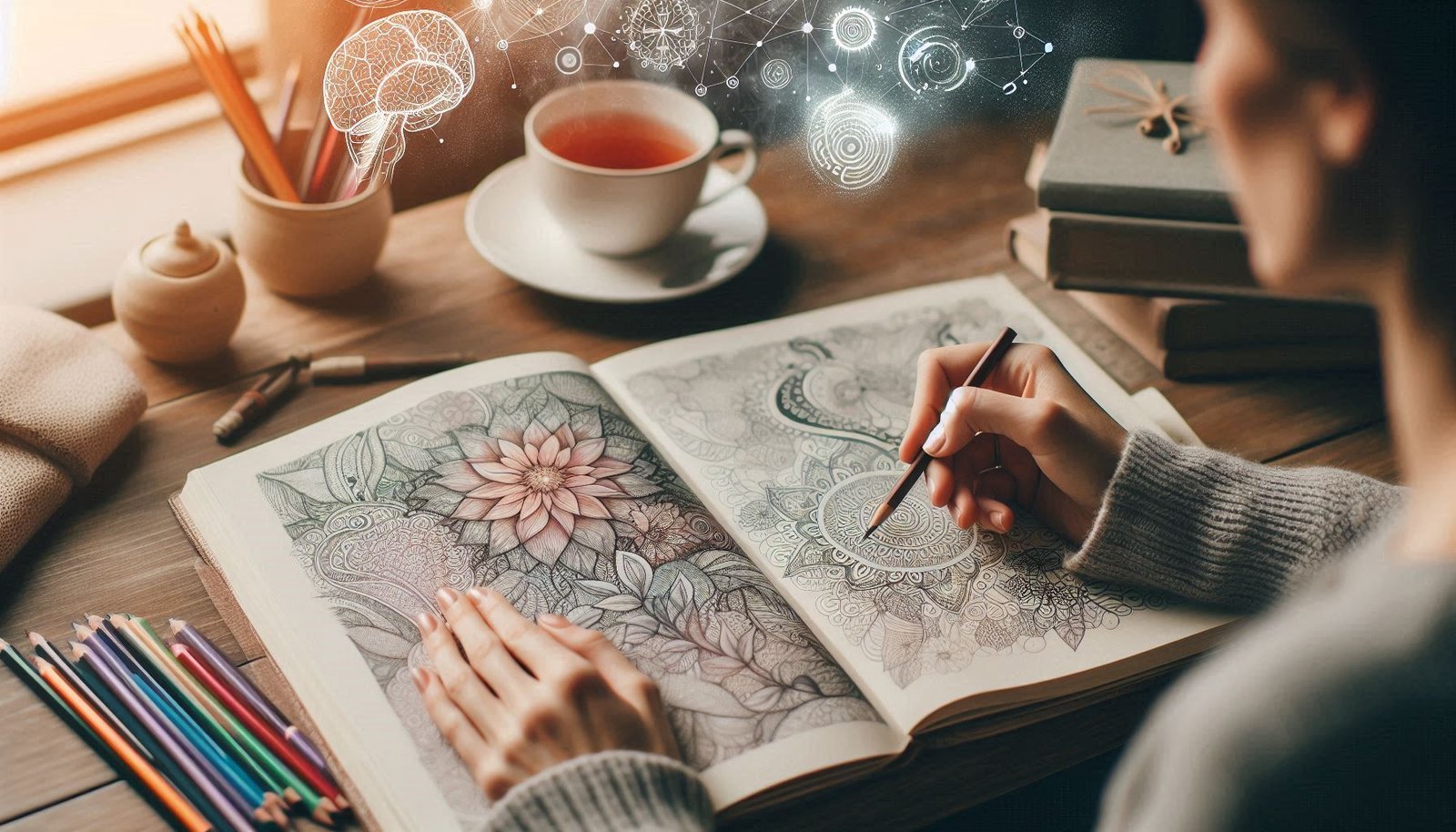In recent years, coloring has emerged as a popular relaxation technique for adults, with many turning to it as a form of self-care and stress relief. But is there real science behind the benefits of coloring for mental health? Absolutely! Studies show that coloring engages the brain in a way that promotes mindfulness, reduces anxiety, and improves overall well-being. In this blog post, we’ll explore the scientific reasons why coloring is so beneficial for mental health and how it taps into our natural creativity.
1. Coloring Promotes Mindfulness & Stress Reduction
Mindfulness is the practice of staying present in the moment without judgment, and research has shown that engaging in mindful activities can significantly reduce stress levels. Coloring is considered a mindful activity because it requires focus and concentration while engaging in repetitive movements.
A study published in the journal Art Therapy found that adults who colored intricate designs, such as mandalas, experienced a significant reduction in anxiety levels. This is because coloring shifts the mind away from negative thoughts and promotes a state of relaxation, much like meditation.
2. Coloring Lowers Anxiety and Helps Manage Stress
When we’re stressed or anxious, our brain’s amygdala, the part responsible for processing emotions, goes into overdrive. Coloring has been shown to reduce activity in the amygdala and promote a calming effect on the brain.
A study conducted by researchers at the University of Otago in New Zealand found that just 10 minutes of coloring a day can lead to lower levels of anxiety and depression. The simple act of focusing on coloring patterns helps to regulate breathing and heart rate, easing tension and promoting emotional stability.
3. Coloring Engages Both Hemispheres of the Brain
Coloring is more than just a relaxing activity—it’s also a workout for the brain. It engages both the left and right hemispheres, enhancing cognitive functions such as problem-solving, fine motor skills, and attention to detail.
- The left hemisphere is responsible for logic and organization, which comes into play when choosing colors and staying within the lines.
- The right hemisphere controls creativity and artistic expression, allowing for self-expression through color selection and blending.
This balanced brain activity makes coloring a powerful cognitive exercise that not only relaxes the mind but also stimulates creativity and problem-solving abilities.
4. Coloring Triggers the Brain’s Reward System
Engaging in creative activities like coloring stimulates the release of dopamine, the brain’s “feel-good” neurotransmitter. Dopamine plays a key role in motivation, pleasure, and focus.
As we complete sections of a coloring page, our brain gets small bursts of satisfaction, much like when we achieve a goal or solve a puzzle. This process reinforces positive mental health and boosts overall happiness levels.
5. Coloring Helps Improve Focus and Attention
For people who struggle with focus, such as those with ADHD or high-stress levels, coloring can be a powerful tool. It requires sustained attention to detail, which strengthens concentration and cognitive endurance over time.
A study from the American Journal of Public Health suggests that creative activities like coloring improve attention span and help people develop better coping strategies for stress and distractions.
6. Coloring Encourages Self-Expression and Emotional Release
Art therapy is widely used to help individuals process emotions, and coloring is no exception. The colors we choose often reflect our mood, allowing us to express feelings that might be difficult to put into words.
- Bright colors (yellow, orange, pink) can uplift and energize.
- Cool tones (blue, green, purple) promote relaxation and calmness.
- Dark or muted colors can be used to express deeper emotions or stress relief.
Through coloring, individuals can explore and regulate their emotions in a non-verbal, therapeutic way.
7. Coloring as a Sleep Aid
Engaging in screen-based activities before bed, such as watching TV or scrolling through social media, can disrupt sleep by exposing the brain to blue light. Coloring, on the other hand, is a screen-free activity that helps the mind unwind before bedtime.
Many therapists recommend coloring as a pre-sleep ritual because it relaxes the nervous system, reduces intrusive thoughts, and signals to the brain that it’s time to rest.
Final Thoughts
The connection between creativity and mental well-being is well-documented. Coloring is an easy, accessible, and enjoyable way to tap into the brain’s natural ability to heal and restore balance. Whether you’re using coloring as a stress reliever, a focus booster, or a creative outlet, the benefits are undeniable.
At DIYGiftFactory.com, we offer a wide range of beautifully designed coloring books that cater to different moods and preferences. If you’re looking for a simple yet powerful way to improve your mental health, grab a coloring book, some pencils, and let your creativity lead the way!
What are your favorite coloring themes? Share your thoughts in the comments below!



























